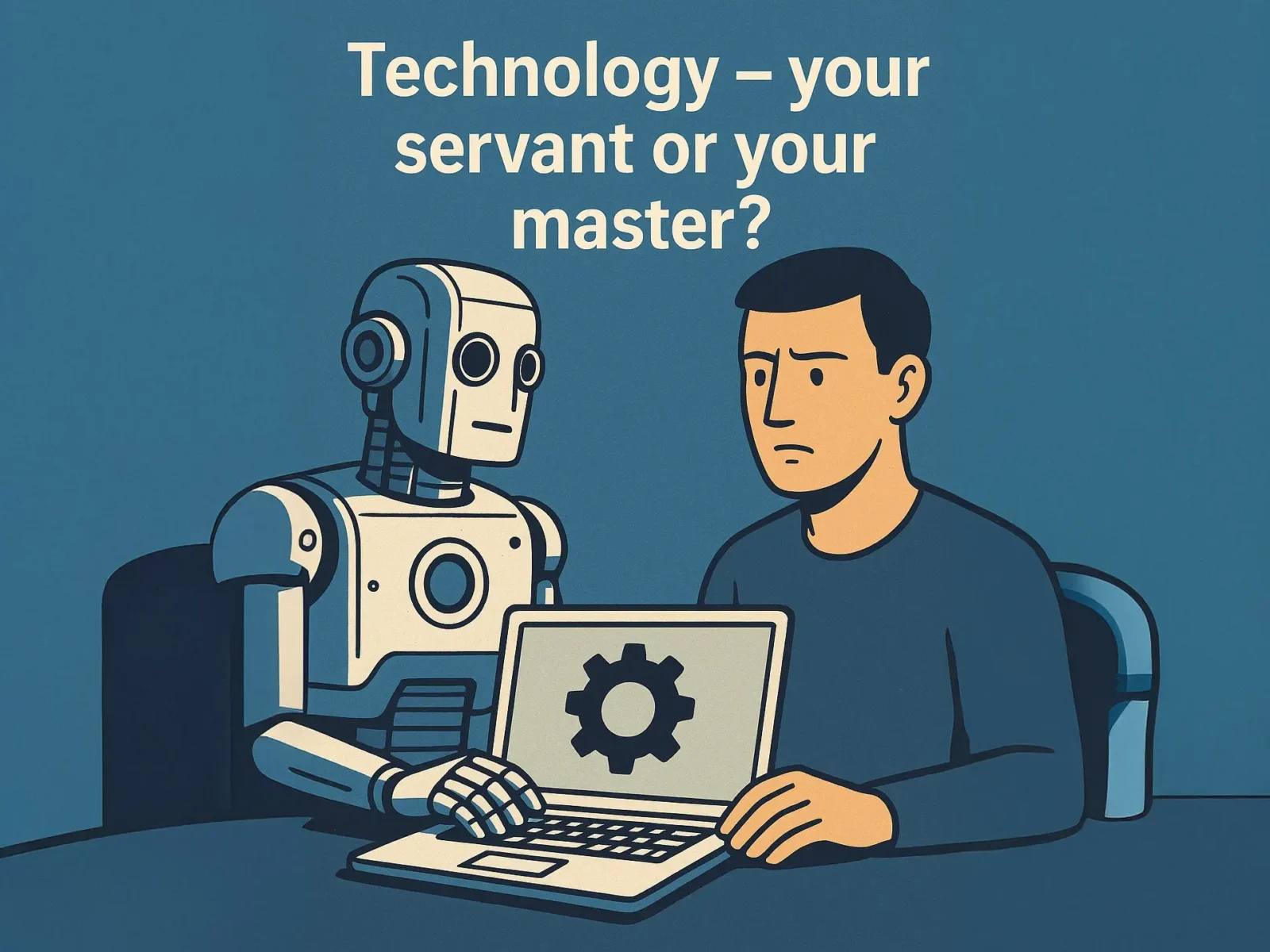Technology – your servant or your master?
Tuesday 12 August 2025
It’s probably true to say that technology was born in the Industrial Revolution of the 18th century. Machines appeared, which could produce things faster than humans, and in greater quantity. Electricity was also discovered, as well as steam power. Straight away, this had benefits as well as disadvantages. Cheaper goods, more easily available, in greater quantity and with more variation, flooded newly-created markets. But the loss of many handicrafts, the disappearance of human skills, replaced by the drudgery of repetitive machine-minding, was resented by many – you may have read about the Luddites.

However, there is another equation that is very relevant, even more so today than ever. When a machine takes over, you’ve handed it a responsibility that used to be yours. And with it, your power. Take something as simple as a calculator. Who wants to work out sums when a machine can do it for you? But what happens if the machine packs up? Some would argue that if you can’t do sums on paper, or in your head, you’ve become a slave to the machine. But there is something more important than that. If you utterly surrender to the machines and let them do everything for you, your thinking, your calculations, your productivity, what happens to your brain? If your brain gets lazy, so does your body. This is an important reason why there are so many obese kids today. It isn’t just the junk food. It’s the lazy brain.
A school in Japan removed calculators, computers and smartphones, and replaced them with the abacus. Quite quickly, the kids were able to calculate with those rows of beads as fast as a keyboard. But that wasn’t the real kicker. As a next stage, they removed the abacus. The kids had developed a mental picture of the abacus, and were able to calculate everything in their head, or in the air. A sort of human version of the Cloud.
So, we need to balance technology with our independence of mind. In short, it has to be our slave, not our master. Its best use is the removal of drudgery. Which is not the same as removal of all effort. For example, try telling your mum that she should throw out her washing machine in the interests of her independence and go back to beating her laundry on rocks at the riverside. Good luck with that one! On the other hand, everything’s a trade. If it breaks down, she’ll probably have no idea how to fix it, and be painfully reminded of how dependent on it she has become.
Which leads us back to the whole question of AI. There’s a clue in the first letter of that acronym. It’s Artificial. It’s not real. ‘Artificial’ also derives from the root ‘artifice’, meaning cunning and false. It’s a very powerful tool. Today you can feed in a load of facts and AI will turn them into a sales letter for you, or a concise report. Come to that, AI will even search out those facts for you in the first place. It gives you the impression that it’s intelligent. But remember, its system was programmed by an intelligent, sentient being. It can give you the impression that it is a creative entity, with feelings and sensitivity, that Alexa really cares about you. It’s rather similar to people who develop an emotional attachment to their car. It acquires human characteristics. This is when the slave starts to become the master.
AI is increasingly used in the health and fitness industry. This can be extremely beneficial. But you need to remain aware of the limitations and the downsides. For example, it’s possible to upload CT scan results and get them translated into English for you to understand. Doctors use AI to help with diagnosis. But if a call-centre does it, there’s no real GP to check it or challenge it.
Many athletes and fitness folk are using and wearing AI to monitor their bodies – sleep, blood sugar, heart rate, blood pressure – and keep them informed. But don’t mistake that for diagnosis. It’s just information. If you start getting worrying results, see your GP.
Some trainers use AI to programme your workouts. But if they’re good trainers, those readouts are as important to them as they are to you, and act merely as a guide to designing your personal programme.
All in all, the ingredients for successful wellbeing and fitness are to keep your mind and your body active, and in harmony with each other. This requires conscious effort on your part. Remember, technology and AI are your slave. Don’t let them run your life as your master.
Now that you know about my martial arts journey with Meij Martial Arts why have one yourself and book a free trial class?